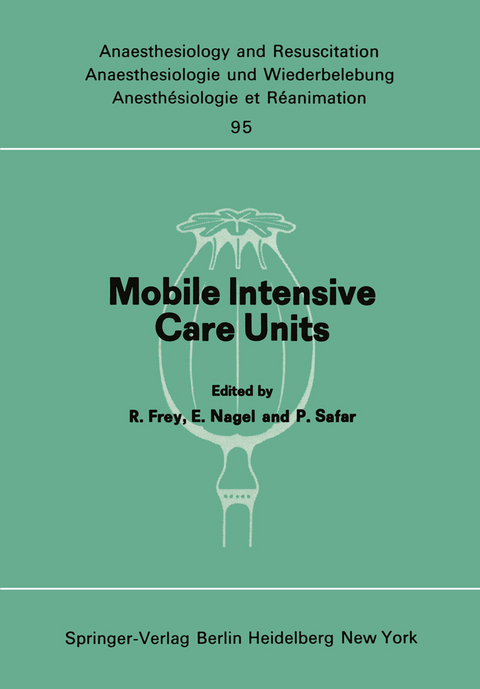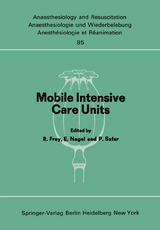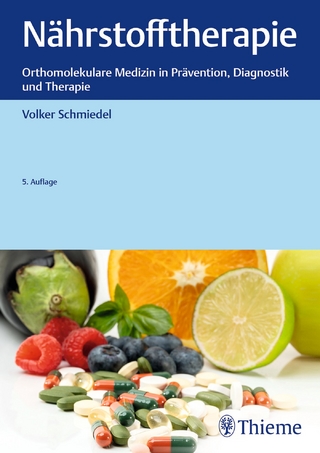Mobile Intensive Care Units
Springer Berlin (Verlag)
978-3-540-07561-5 (ISBN)
I. Flanning and Organization of the Emergency Medical Services System.- I. 1. The Concept of an Emergency Health Care Planning Team.- I. 2. On the Organization in the Piemonte and Torino Areas.- I. 3. The American Approach to Improvement of Emergency Medical Services: Community Councils of EMS.- I. 4. Political Roadblocks to Organizing Emergency Medical Services (EMS) in Allegheny County, USA.- I. 5. Allegheny County, Pennsylvania1s Emergency Care Non-System.- I. 6. Centralization of all Personnel and Equipment in Rescue Services.- I. 7. Intervention of Helicopters in Disaster Relief and Rescue Service in the Federal Republic.- II. Communications.- II. 1. Telemetry Command in an Integrated Emergency Care System.- II. 2. Interdisciplinary Nature of Mobile Intensive Care Units.- II. 3. Possibilities and Limits in the Use of Bio-Telemetric Appliances in Rescue-Services.- II. 4. A Communication Set up for Air, Sea and Ground EMS.- III. Treatment at the Scene and Düring TransportationIncluding Physician Command.- III. 1. The MAST-1 Garment in Hypovolemic Shock.- III. 2. Behandlung am Notfallort und während des Transportes im Hochgebirge.- III. 3. Cardiovascular and Other Effects of Transporting III Patients.- III. 4. A Simple Method for Continuous ECG Registration by Compact Casette Tape Recorder Düring Helicopter Transport.- III. 5. Features of a New Intensive Care. Ambulance.- III. 6. The S-61 Helicopter as Mobile Intensive Care Unit.- III. 7. Mobile Neonatal Intensive Care.- III. 8. Care for and transport of Newborn Babies in the Ambulance practice.- III. 9. Secondary Transportation in Southern Finland.- 111.10. The Mobile Intensive Care Unit in Helsinki.- 111.11. Experiences in a Mobile Intensive Care Unit in Lagos.- 111.12. Der Service d1 Aide Medicale d'Urgence.-111.13 Experiences with an Ambulance-Service in Oslo Manned by a Doctor.- 111.14. Mobile Intensive Care Units.- 111.15. Transport of the Severely Injured Düring Long-Distance Flight.- 111.16. Function of a Coordinated Helicopter-Emergency Service.- 111.17. Importance and Complications in Application of Cava- Catheters under Transport Conditions.- 111.18. Possibilities of Pain Alleviation at the Site of an Accident or Disaster.- 111.19. Ambulance Design and Equipment for Mobile Intensive Care.- IV. Continuing Life Support in the Hospital.- IV. 1. Critical Care Medicine: Organizing and Staffing ICUs.- IV. 2. Patient Care during Inter-Hospital Transfer.- V. Data Aoquisition and Evaluation of System.- V. 1. Evaluation Research.- V. 2. Evaluation of an EMS System by Analysis of Compiled Data from Run Reports and the Emergency Department Log.- V. 3. The Computer Interrogative Textbook Project: Ä Preliminary Report.- V. 4. Ein Vorschlag zur Verbesserung neurochirurgischer Verlaufskontrollen.- VI. Training of Non-Phy sicians and Physicians.- VI. 1. Erkennung und Erste Hilfe durch Laien (Ausbildung der Bevölkerung).- VI. 2. Operation of Cardiac Emergency Care Delivery System by Paramedical Personnel.- VI. 3. The Training of Emergency Medical Technicians-Cardiovascular.- VI. 4. Recognition and First Aid by Bystanders.- VI. 5. Suggestion for the Organization of Mobile Intensive Care Units.- VI. 6. Present Situation in the Training of Rescue Personnel.- VI. 7. Evolution of Emergency Medical Technicians and Paramedics in the U.S.A.- VI. 8. Inadequacy of Prehospital Emergency Care.- VI. 9. First Aid and Emergency Care Training; Its Effect on Prehospital Emergency Care.- VI.10. Advanced Life Support by Volunteer Fire Department Ambulance Personnel.- VI.11. Teachability ofUnemployed and Undereducated Individuais as Emergency Medical Technicians (EMT's).- VII. The Emergency Cardiac Care System.- VII. 1. The Influence of Prehospital Emergency Cardiac Care upon Community Mortality from Coronary Artery Disease.- VII. 2. Einsatzerfahrungen mit dem Züricher "Kardiomobil".- VII. 3. Blind Defibrillation.- VII. 4. The Efficacy of Pre-Hospital Therapy in Cardiac Disease.- VII. 5. Cardiopulmonary Resuscitation, Basic Life Support Self- Training System for All Personnel.- VIII. Disaster Preparedness and Care.- VIII. 1. Emergency Care in Major Accidents (Railway, Air, Road, Industrial).- VIII. 2. Intensive Care under Primitive Conditions.- VIII. 3.The Catastrophe Plans for Lausanne and the Canton of Vaud.- VIII. 4. International Preparedness Operation and Coordination in Cases of Disaster.- VIII. 5. Die ärztliche Versorgung bei Großkatastrophen.- VIII. 6. The Involvement of the Police Service in Great Britain with the Medical Services at Times of Disaster.- VIII. 7. A Network of Base Hospitals for Large Scale Catastrophes.- VIII. 8. Emergency Care Medicine under Primitive Conditions.- IX. Research and Innovations.- IX. 1. Research in Emergency and Critical Care Medicine (ECCM).- IX. 2. Reducing of Vibration Stress Inside Emergency-Ambulance.- IX. 3. Tragen, Ausführungen und Abmessungen. Anordnung der Lagerung in den Transportsystemen.- IX. 4. International Cooperation in the Field of Rescue-Technical Investigation.- IX. 5. Considerations on International Teamwork in the Field of Aid in Catastrophes and Emergency Medicine.- IX. 6. Verbesserungen des Rettungswesens in Rheinland-Pfalz.- X. Recommendations.- XI. Empfehlungen.
| Erscheint lt. Verlag | 1.12.1976 |
|---|---|
| Reihe/Serie | Anaesthesiologie und Intensivmedizin Anaesthesiology and Intensive Care Medicine |
| Mitarbeit |
Stellvertretende Herausgeber: P. Rheindorf, P. Sands |
| Zusatzinfo | XVI, 272 p. 24 illus. |
| Verlagsort | Berlin |
| Sprache | englisch |
| Maße | 170 x 244 mm |
| Gewicht | 580 g |
| Themenwelt | Medizin / Pharmazie ► Medizinische Fachgebiete ► Anästhesie |
| Medizin / Pharmazie ► Medizinische Fachgebiete ► Notfallmedizin | |
| Studium ► Querschnittsbereiche ► Prävention / Gesundheitsförderung | |
| Schlagworte | Defibrillation • Erste Hilfe • Intensive Care Medicine • Notfall • Notfallmedizin • Notfallmedizin / Akutmedizin |
| ISBN-10 | 3-540-07561-5 / 3540075615 |
| ISBN-13 | 978-3-540-07561-5 / 9783540075615 |
| Zustand | Neuware |
| Haben Sie eine Frage zum Produkt? |
aus dem Bereich




